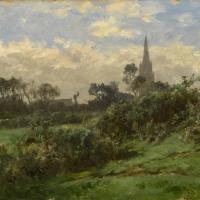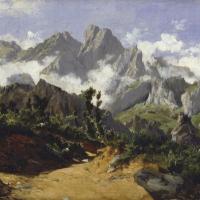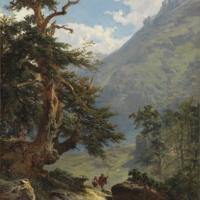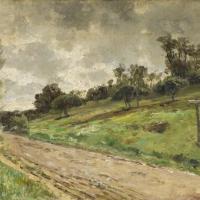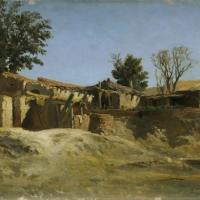Carlos De Haes
Douarnenez Steeple
$450.00
Fog (Picos De Europa)
$450.00
The Lane
$450.00
The Pass (Jaraba De Aragon)
$450.00
The Port Of Rouen
$450.00
Carlos De Haes
Carlos Sebastián Pedro Hubert de Haes (January 25, 1829 – June 17, 1898) was a Spanish painter from Belgium. He was noted for the Realism in his landscapes, and was considered to be the "first contemporary Spanish artist able to capture something of a particularly Spanish 'essence' in his work". He was cited along with Jenaro Perez Villaamil and Aureliano de Beruete as one of the three Spanish grand masters of landscape painting, the latter of which was his pupil.
In the 1850s, Haes was involved in the rise of the Realist school of landscape. Coincidentally his landscape and wildlife paintings of the Monasterio de Piedraoccurred at the time of an academic opening for the Painting School of the Real Academia de Bellas Artes de San Fernando, the selection to be made by a landscape competition. In 1857 he became the first professor of landscape painting, the first in Spain to teach painting directly from nature. In 1860, he became an Academic at the Royal Academy. In 1876, he presented at the National Exhibition with La Canal de Mancorbo en los Picos de Europa ("The Canal of Mancorbo in the Picos de Europa") later acquired by the Spanish state to be part of the collection of the Museo del Prado, because of its significance as a realistic Spanish landscape painting.
Following the ideals of an academic, Haes believed that the end result of art should be the truth found in the imitation of nature, the source of all beauty. The painter should imitate nature as closely as possible, and to do so, you must know nature and not rely on imagination. Leaving behind Romanticism, he was early to embrace the En plein air style, working from outdoor preparatory sketches which were completed within a workshop. In terms of technique, his strokes have Impressionists connotations, though he lacks the treatment of light and color, and moves away from the spontaneity and immediacy of this art movement. Towards the end of his career, he developed a looser and more direct style associated with the Barbizon school. The best of his extensive work (four thousand pictures and notes) can be seen in the Carmen Thyssen Museum in Málaga, the Lleida Museum, and the Museo del Prado, which received 183 works of Haes which were donated by the Museum of Modern Art. His work has been documented by the likes of Rubén Darío.



